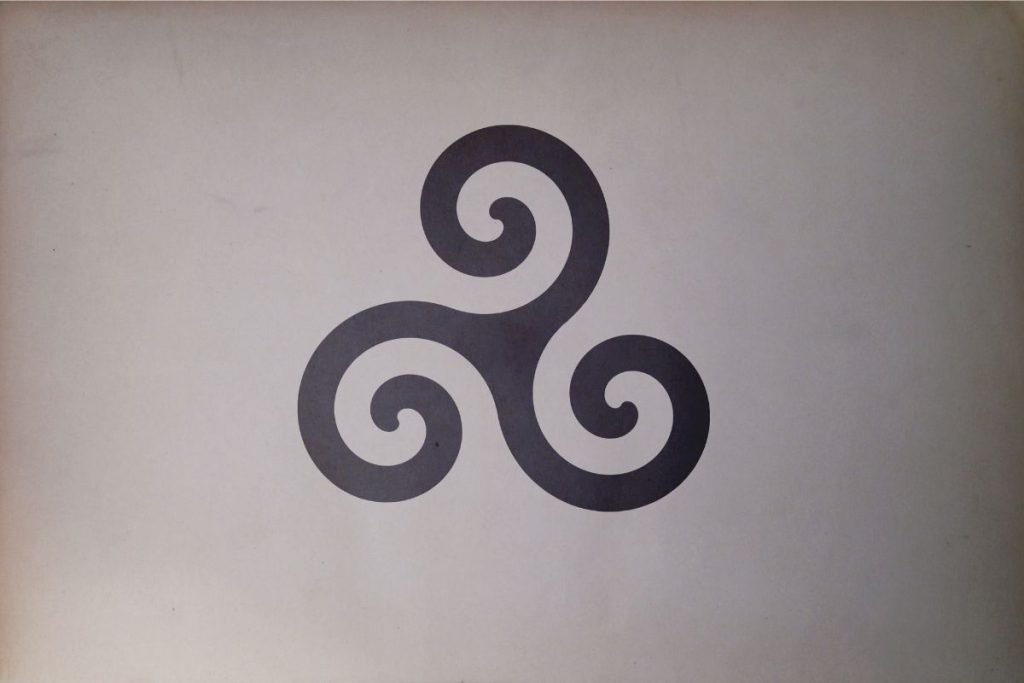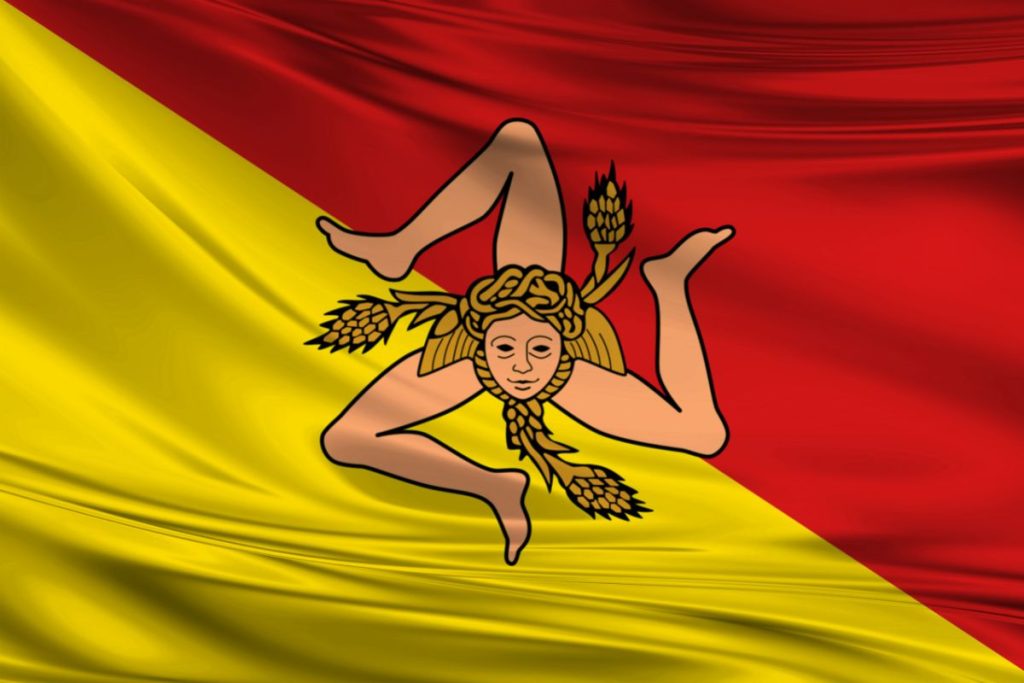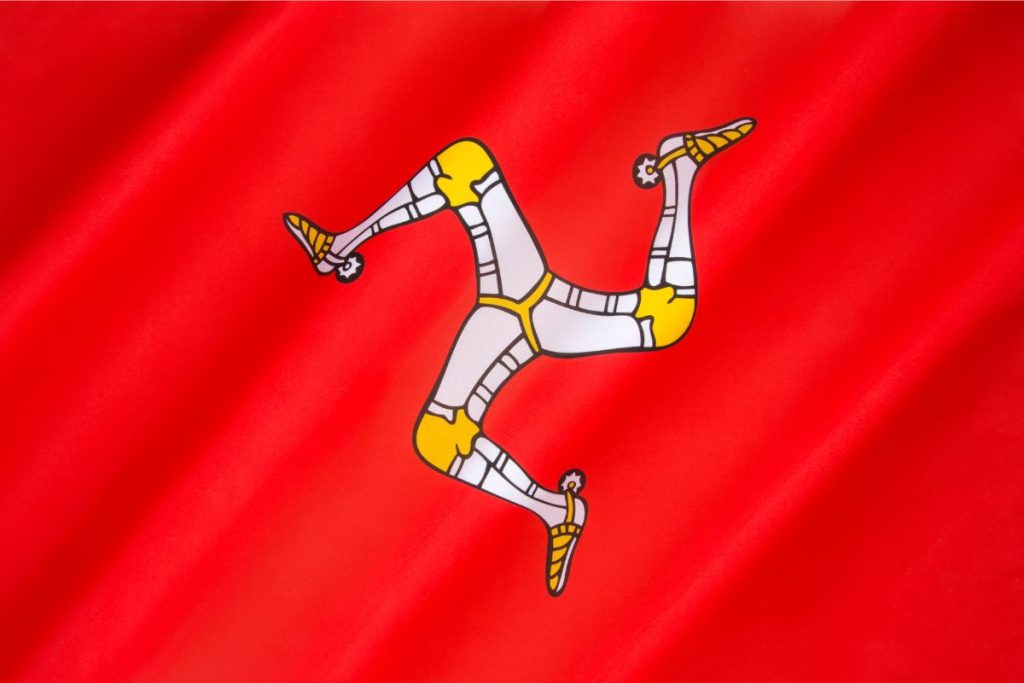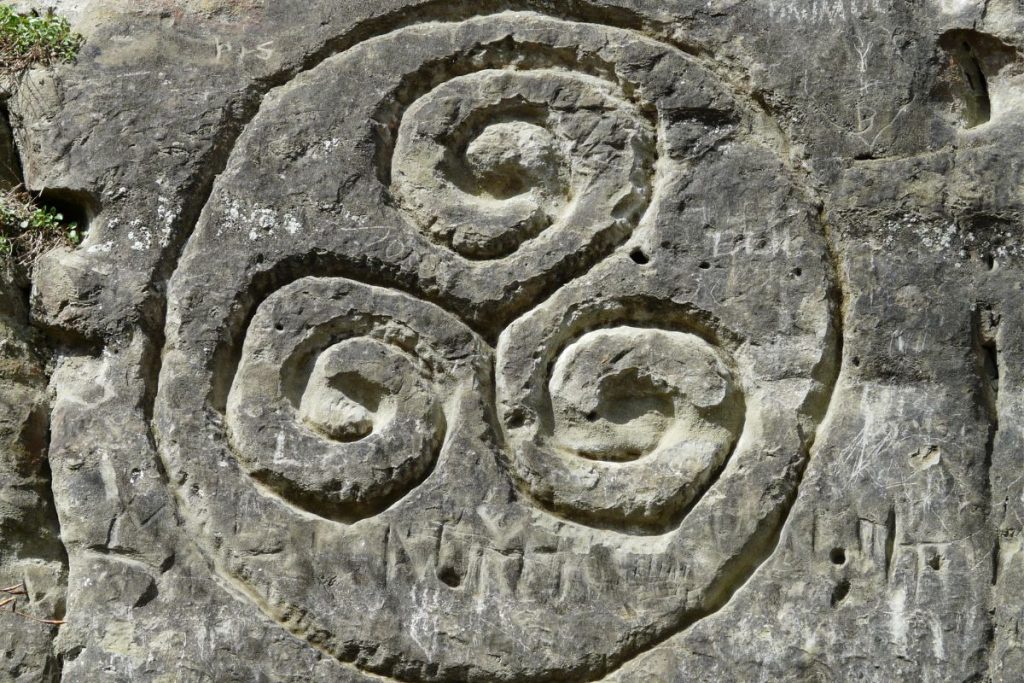The Celtic triskele is an ancient symbol of spirituality. It comes from the Greek word triskeles (tri and Skelos), meaning three legs. The triskele has roots in Irish culture and signifies the importance of the number three for Celts. The triskele represents a union of three, like the holy trinity. It is associated with life-death-rebirth, past-present-future, or the physical-mental-spiritual self of a person.
History of Triskele Symbol
Historians say that the triskele is the oldest symbol of spirituality. It dates back to the Neolithic era and is carved on the entrance of the Newgrange Passage Tomb in Ireland. This famous site in Boyne Valley is 5000 years old.
Many artifacts from Ireland, Europe, and America have the triskele engraved on them. Studies show that the symbol has Celtic origins and has been used since 500 BC. Early pagans attributed various meanings to the symbol. The triskele represented a union of three holy aspects like the land, sky, and sea or the triple goddesses (maiden, mother, and crone).

What Does Triskelion Symbolize?
The triskele has three arms spiraling outwards in three directions from a central point. The arms/ legs are in motion, signifying that life goes on and is a continuous cycle. This movement generates energy and denotes progress, action, or revolution.
The Triskelion can symbolize many other aspects, such as mother-father-child, creation-preservation-destruction, and power-intellect-love. It also represents the present world, the spirit world, and the celestial world. It shares similarities with the triquetra, another ancient Celtic/ pagan symbol.
The triskele is used in different forms by different cultures. The spiral knot has been altered and redesigned to form more symbols.
Triskele on Sicilian Flag
The Sicilian flag has a version with three human legs placed around the head of Gorgon. Sicily’s flag has the symbol set in the middle of the flag with a red and yellow background. The triskele has three wheat ears and a pair of wings.

Triskele on Isle of Man Flag
The spiral triskele is also on the flag of the Isle of Man (flag of Mann). It has three legs in armor with golden spurs placed on a red background. The Manx coat of arms inspires this flag.

Triskele as Irish Air Corps
It inspired the Irish Air Corps roundel symbol, where the three spirals resemble three arms of the fan and are colored in white, green, and orange to represent the country’s flag.
Triskele as U.S. Transportation Department Seal
The triskele is also the seal of the United States Department of Transportation. This symbol looks like three curved arms extending in different directions (and is a simplified version of the triskele).
Triskele in Shinto
The symbol is also found in the Shinto culture of Japan and is associated with Hachiman, the god of war. The spirals are termed commas (tomoe). A three-fold tomoe is the symbol of Hachiman.

Triskele in Buddhism
In Buddhism, the triskele is a meditation symbol. In Tibetan Buddhism, the triple spiral is similar to Gankyil, the wheel of joy.

Triskele as C.R. Symbol
It is also the primary symbol of Celtic Reconstructionist Paganism (C.R.). This approach intends to revive and re-establish the Celtic cultures from the pre-Christian era.
What Does the Triple Spiral Represent?
Some of the oldest traces of the spiral triskele belong to the islands of Malta. The Triskelion is 6500 years old. It is also found on coins from Lycia and vessels (artifacts) from the Mycenaean civilization in ancient Greece. The triple spiral or the spiral knot represents several combinations of three vital elements for people from a culture/ religion.
The symbol continued to be used even during the Christian invasion of Ireland. The triple spiral appears in the Insular art and is engraved on Celtic crosses. The early Christians in 5th-century Ireland appropriated the triskele, triquetra, and other Celtic symbols to spread Christianity.
The spiral was used to represent the Holy Trinity of the Father, the Son, and the Holy Spirit. The triskele was also used to denote the three days between the crucifixion of Jesus and his resurrection. Another Christian interpretation of the triskele represents the three spirals as the three attempts of the devil to tempt Jesus in the desert.
However, the triple spiral/ triskele continues to be recognized as a Celtic symbol with pagan and Neolithic roots (with a presence in the Bronze Age).

Is the Triskele Greek?
The spiral triskele belongs to the pre-Celtic era and is an ancient symbol from Sicily. This was when Sicily was a colony controlled by ancient Greeks. The Sicilian Triskelion is called trinacria and represents the three promontories- Cape Pelorus, Cape Passero, and Cape Lilibeo.
The Gorgon in the triskele is the mother of Medusa, Euryale, and Stheno. The head in the center has snakes sprouting in different directions, signifying that it belongs to Medusa, famous in Greek mythology.
The Greek Triskelion has three interwoven spirals or legs. The symbol denotes motion or forward movement in a group of threes.
Triskele Symbol in Popular Culture
The triskele is widely used in popular culture. The flag of Brittany also has the triskele symbol. En Avant de Guingamp, a Breton football club, uses the triple spiral in its emblem. Modern neo-pagan groups and Wiccans use the triskele symbol to represent the triple goddess.
Science fiction and pop culture are no strangers to the triskele. The agents of S.H.I.E.L.D. (intelligence agency) named their headquarters triskele in the Marvel Comics universe. An episode of Star Trek is titled The Gamesters of Triskele and was first aired in 1968.
A British fantasy series, In Merlin (2008), used the triskele as the druids’ symbol. MTV’s Teen Wolf series (2011) often used the Triskelion and other Celtic symbols. The R.C.A.’s ‘Spider’ plastic vinyl records come with a triskelion design.
Even the BDSM community uses the Triskelion (white on a black background). The triple spiral is commonly found on jewelry, artworks, decorative items, T-shirts, logos, emblems, etc., in Ireland and worldwide.
If you found this article interesting, you’re sure to love this article on more Celtic symbols for strength.

